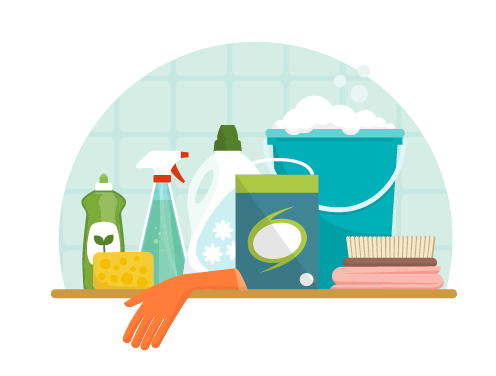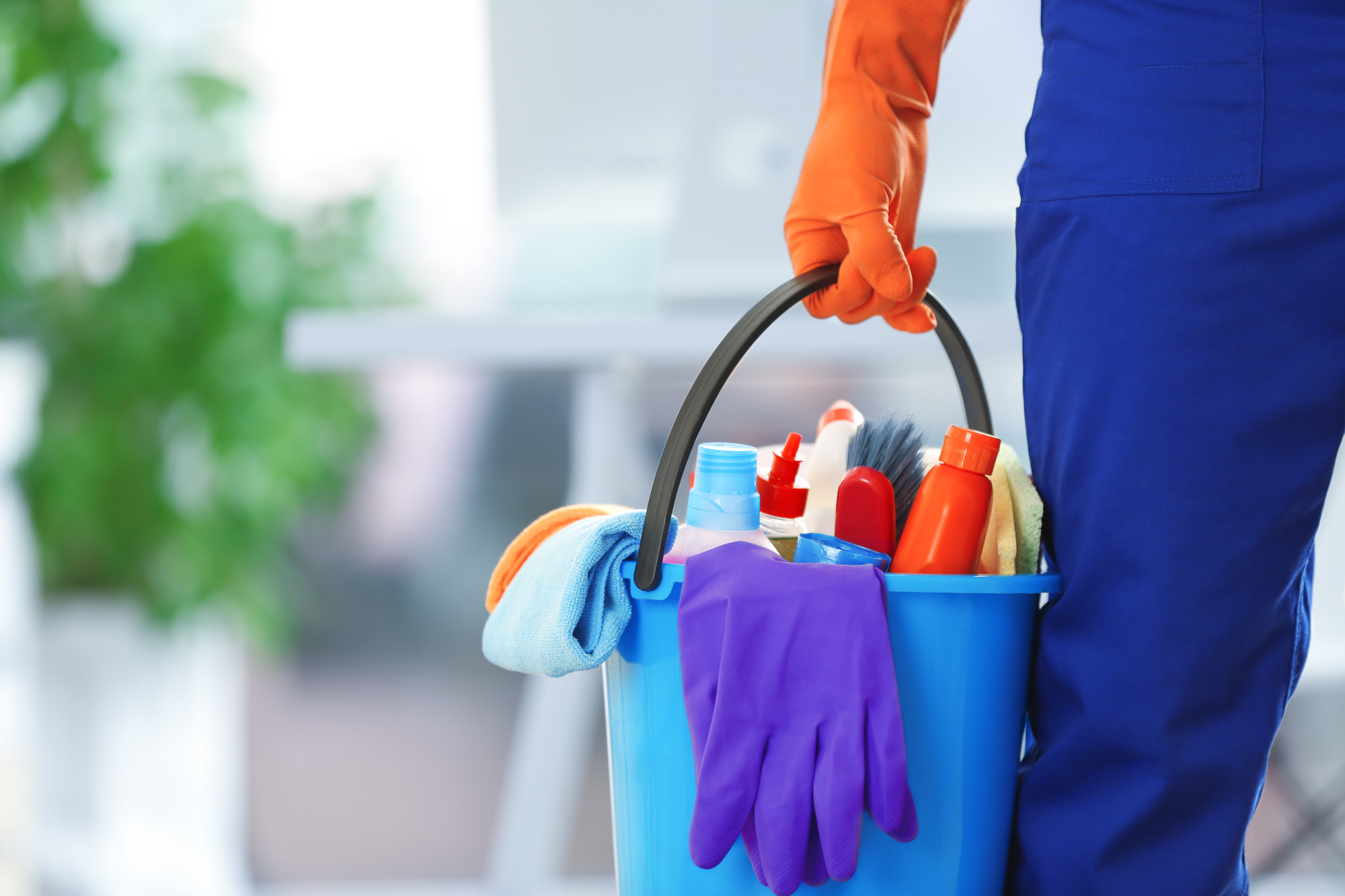Recognizing the Requirement for Extensively Decontaminating and Sterilizing Frequently Touched Surfaces in High-Traffic Locations
In the realm of public health and wellness and safety, the meticulous disinfection and sanitization of frequently touched surface areas in high-traffic areas stand as paramount measures in avoiding the spread of unsafe pathogens. By exploring the various elements of surface area disinfection, from the dangers connected with ignoring cleaning procedures to the reliable techniques that can be utilized, a clearer understanding arises of the essential duty these techniques play in securing public health and wellness.
Significance of Surface Disinfection
Emphasizing the comprehensive disinfection of high-traffic surface areas is vital in keeping a hygienic setting and stopping the spread of damaging pathogens. High-touch surfaces such as door manages, light switches, lift buttons, and countertops function as reproducing grounds for viruses and microorganisms. Routine sanitation of these surfaces is important to decrease the threat of contamination and transmission of health problems.
By executing a durable disinfection procedure, institutions and businesses can produce a safer atmosphere for workers, site visitors, and customers. Proper surface disinfection not only alleviates the spread of transmittable diseases however also infuses confidence in the cleanliness and security of the properties. This proactive strategy shows a commitment to health and wellness, which is particularly important in high-traffic areas where the chance of direct exposure to virus is heightened.
In addition, surface area disinfection plays a crucial function in overall infection control methods. Incorporated with hand hygiene techniques, wearing masks, and maintaining physical distancing, detailed disinfection of high-touch surfaces develops a detailed protection against the transmission of damaging bacteria. Prioritizing surface disinfection is a crucial part of an all natural approach to health and wellness and safety and security in common areas.
Dangers of Ignoring Cleansing Practices
Disregarding thorough sanitation of high-traffic surface areas substantially enhances the threat of viral and microbial contamination, positioning a major threat to the health and wellness of individuals frequenting these rooms. Failure to carry out appropriate cleaning techniques can cause the buildup and spread of unsafe microorganisms, including bacteria and infections, on frequently touched surface areas such as doorknobs, handrails, elevator buttons, and kitchen counters.

Additionally, neglecting the importance of complete cleansing not only compromises the well-being of individuals yet likewise undermines initiatives to preserve a clean and sanitary environment. It is important to recognize the value of appropriate sanitation procedures in stopping the spread of infections and securing public health.
Reliable Disinfection Techniques
To maintain optimum sanitation and reduce the danger of contamination on high-traffic surface areas, utilizing effective sanitation methods is crucial. One of one of the most effective and usual disinfection techniques is making use of chemical anti-bacterials. These products can vary in toughness and composition, with some targeting particular virus like bacteria or infections. It is vital to follow the producer's guidelines for proper dilution, get in touch with time, and air flow when making use of chemical anti-bacterials to ensure their efficiency - Scrub the Surfaces.
Another efficient technique is using UV-C light. UV-C light has actually been revealed to be efficient in eliminating a large range of microbes by interrupting their DNA framework, therefore avoiding them from duplicating. Nonetheless, it is important to utilize UV-C light properly, making certain that the correct intensity and exposure time are put on attain the wanted disinfection outcomes.
Additionally, using heavy steam cleansing as a sanitation method can be very reliable, especially on surface areas that are heat-resistant. Heavy steam can pass through porous surface areas and kill microorganisms, viruses, and various other pathogens efficiently. When using vapor cleaning, it is essential to guarantee that the surface area gets to the needed temperature level for an adequate quantity of time to guarantee appropriate sanitation.
Influence On Public Wellness
The maintenance of high requirements of sanitation and sanitation on high-traffic surfaces plays a critical role in guarding public health. Regularly touched surfaces in areas with high tramp, such as doorknobs, handrails, elevator buttons, and toilet facilities, function as reproducing premises for hazardous pathogens. Falling short to sufficiently decontaminate these surface areas can lead to the fast spread of contagious diseases within neighborhoods. By applying comprehensive disinfection protocols, the threat of transmission of infections, bacteria, and other germs can be substantially reduced.
In high-traffic areas like airport terminals, institutions, healthcare facilities, and public transportation systems, the influence of extensive disinfection steps can not be understated. Focusing on the sanitization of often touched surface areas is a positive approach to advertising public health and wellness and enhancing the safety and security of individuals about his in common rooms.
Applying Routine Cleansing Procedures
Promptly setting up and sticking to a consistent timetable of cleaning methods is critical for keeping the cleanliness and safety and security of high-traffic surfaces. Normal cleaning procedures are important in stopping the buildup of bacteria and pathogens on often touched surface areas, particularly in areas with high foot web traffic. By implementing an organized approach to cleaning, organizations can effectively decrease the threat of disease transmission and produce a much healthier atmosphere for employees, clients, and the general public.
To develop an effective cleaning schedule, it is critical to identify high-traffic areas that need constant focus. These locations may include doorknobs, hand rails, lift switches, restroom facilities, and common you can try this out tools. Implementing a routine cleaning routine that targets these surface areas multiple times a day can significantly minimize the spread of harmful microorganisms and viruses.
In addition, utilizing suitable cleaner and disinfectants is vital to making certain that surfaces are thoroughly disinfected. Routine training of cleansing personnel on appropriate cleaning this content strategies and the importance of adherence to the cleaning timetable is also important in maintaining a hygienic environment. By focusing on constant cleaning protocols, organizations can promote the wellness and well-being of individuals who interact with these high-traffic surface areas.

Conclusion
In final thought, it is critical to focus on complete sanitation and sanitization of regularly touched surface areas in high-traffic locations to avoid the spread of hazardous microorganisms and keep public wellness. Neglecting proper cleaning practices can increase the danger of contamination and transmission of illness. By carrying out routine cleansing procedures and utilizing efficient sanitation techniques, we can produce a much safer atmosphere for everyone (Scrub the Surfaces). It is imperative to recognize the significance of keeping tidy surfaces in high-traffic areas to ensure the well-being of the area.
In the realm of public wellness and safety, the meticulous sanitation and sanitization of often touched surface areas in high-traffic locations stand as paramount actions in stopping the spread of dangerous pathogens. By discovering the various elements of surface sanitation, from the risks linked with overlooking cleansing procedures to the reliable methods that can be used, a more clear understanding emerges of the essential duty these techniques play in securing public health.In addition, using steam cleansing as a sanitation technique can be very reliable, especially on surface areas that are heat-resistant. When using steam cleansing, it is vital to guarantee that the surface area gets to the needed temperature for an enough amount of time to ensure proper sanitation.
In conclusion, it is vital to prioritize complete sanitation and sanitization of frequently touched surfaces in high-traffic locations to prevent the spread of damaging virus and keep public health.